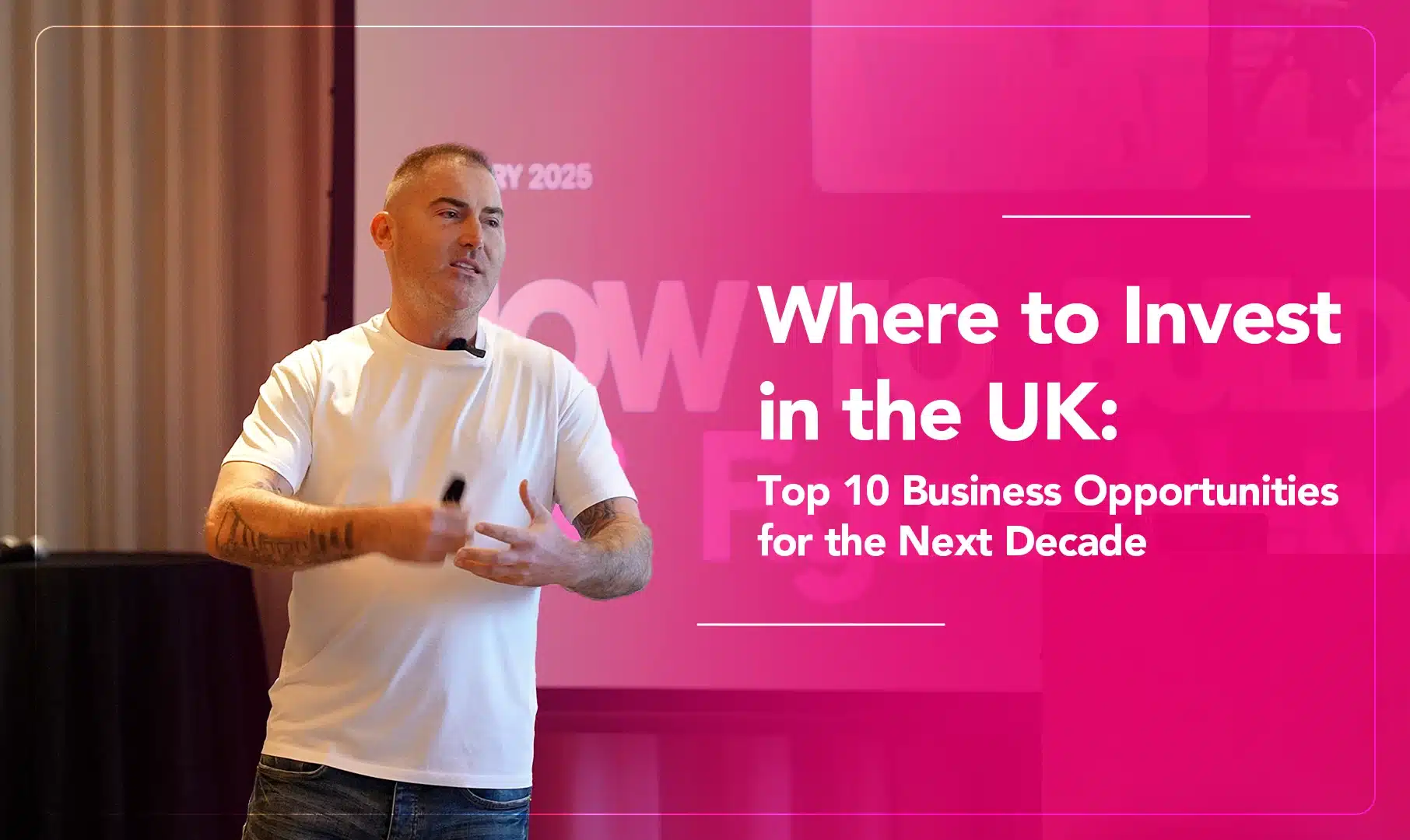
In 2023, the e-commerce industry is predicted to generate $6.3 trillion globally. In context, Forbes highlighted that:
- 20.8% of retail purchases are expected to take place online in 2023
- By 2026, 24% of retail purchases are expected to take place online
- E-commerce sales are expected to grow by 10.4% in 2023
- By 2026, the e-commerce market is expected to total over $8.1 trillion
If e-commerce was a country it would have the third largest GDP in the world, and with comparatively low barriers to entry, as well as a variety of ways to get involved (Amazon accounts for 37.8% of e-commerce sales, for those who want to leverage its platform), it makes sense that individuals and businesses would like a slice of the pie.
How can I make money fast with e-commerce?
Unlike property, e-commerce can turn into quick results once everything’s set up. There’s always a newcomer to the market, disrupting the space and making someone a seemingly overnight success story. Even big brands like Apple continue to see vast growth in e-commerce, particularly post-pandemic.
Statista wrote: “Apple.com was the fastest growing e-commerce website in 2022. The global domain of the big tech company saw its average annual traffic grow by over 262%, outdoing even the fashion marketplace shein.com at about 75%. Ozon.ru ranked third with a traffic growth of nearly 66%.”
That said, most businesses take two to five years before they start to turn a profit which means owners themselves can take money out – often profits initially go back into the business. However, to give you a sense of the space you’re looking at, typically at the moment online retailers see an average 41.5% in gross margins and 7.3% in net margins, according to data compiled by the NYU Stern School of Business.
Is it too late to make money on e-commerce?
No! With generative AI about to get into full swing the party’s only just getting started. It’s certainly not too late to get started in e-commerce, but as with all things, it depends on what you do and how you do it.
What ways do people make money in e-commerce?
Broadly speaking, the types of e-commerce businesses include:
- B2C (Business-to-consumer): selling directly to your end-customers
- B2B (Business-to-business): selling to other businesses who may or may not be the end customer
- B2B2C (Business-to-business-to-consumer): selling in partnership with another organisation to an end customer.
- C2B (Consumer-to-business): where you as an individual sell goods and services to companies.
- D2C (Direct-to-consumer): Selling your own product directly to end customers.
- C2C (Consumer-to-consumer): Also referred to as online marketplaces — this would be selling items directly to other end users on platforms like Craigslist, Walmart, Alibaba and eBay.
- Drop shipping: this is where you take orders for a product but you never actually hold stock. It’s one of the fastest-growing methods of e-commerce.
- Subscription business models: Based on repeat revenue, this is where your product or service is designed to be bought on repeat at scheduled intervals (monthly, quarterly etc).
To make money, the key is really in knowing your product, your target market, and understanding the platform and marketing capabilities that you’re using and that are available to you. Our advice would be to run a competitor analysis once you have an idea but before you start investing – I also happen to have my own.
Additional money-making opportunities within e-commerce sit alongside your main product with supplementary revenue opportunities like affiliate marketing and strategic partnerships.
What are the 5 success factors of e-commerce businesses?
Just like any business, there are a few key factors that contribute to success:
- Strategic focus: know what you do, why you’re doing it and how you’re doing it – in short, understand the purpose of your brand and what makes it unique.
- People: Make sure you choose the right people to have around you – people who are skilled, loyal, hard-working and align with your vision. Great leadership support is also imperative – your directors, non-executive directors and even a business coach or mentor.
- Operations: Make sure your processes are fine-tuned to deliver the best product and customer service.
- Marketing: This includes the whole marketing spectrum, from sales to customer relations and advertising. It needs to be clear, sustainable, and have clear directives.
- Finances: It sounds obvious, but make sure you’re actually going to make a profit on your sales rather than simply moving money around. Be clear about your cash flow strategy, and make sure you stay on top of the numbers at all times – it’s all too easy to lose track.
What type of e-commerce makes the most money?
According to Forbes, in 2023: “handmade products are some of the most profitable e-commerce products because supplies can often be sourced at low costs while final products often demand premium prices.”
However, if Amazon has proven anything, it’s that you can make money selling anything and everything online, the key is in delivering a great service and a great experience. Make it clear what people are getting in your advertising, and get your operations straight.
Consider whether your business model is based on volume or the profit of each individual product, work out your risk spread and how to understand how many units you need to sell to make your business successful. The majority of e-commerce businesses are still B2C, but there’s rapid growth in B2B and the subscription sector is growing at pace, with vast scope for opportunity in B2B.
According to Insider Monkey, the top five most profitable products sold online are:
- Plants: average profit margin 95%
- Digital art/ graphics: average profit margin 90%
- Watch accessories: average profit margin 80%
- Wireless earbuds: average profit margin 76%
- Car covers: average profit margin 68%
What is sold the most on e-commerce?
A cross-section of surveys show that fashion clothing and accessories are the most sold products around the world, including online. It’s a trillion-dollar industry with a vast range of product opportunities, and established mechanisms for distribution.
Just remember though, because it’s the most sold set of items, it’s also the area with the highest competition as well. Volume doesn’t necessarily equate to profitability, so don’t automatically choose fashion for your e-commerce business. Think your proposition through because if you do it well, you can probably make something new or more niche into a great success.
How can I make my e-commerce successful?
There’s no definitive way to make your e-commerce business successful, but there are things you can do to make it much more likely. Start by getting the groundwork right – know your business, know your market and know your margins. Often profitability is not in how clever the product is, but the margins on them and the seamlessness of your operations. That includes everything from your costs to your storage liabilities, your borrowing costs, your cash flow and the timings of incoming and outgoing funds.
Start by developing a business plan and make sure you have good people around you – your staff, your Non-Executive Directors, and even a business coach to challenge your thinking, keep your head on track and make sure you’re not in an echo chamber of opinion.
Things to consider when setting up your e-commerce business include:
- Set up costs
- Staffing costs
- How you buy
- How you sell
- Logistics
- Storage
- Cashflow
Do you want help making your ecommerce business a success? My team and I offer business consultation, financial investment and strategic guidance – get in touch to find out more.





